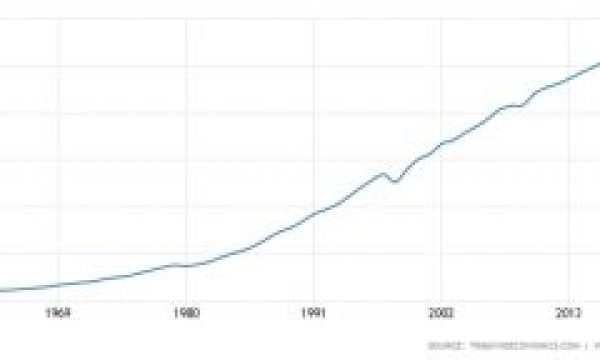Click to join the conversation with over 500,000 Pentecostal believers and scholars
Click to get our FREE MOBILE APP and stay connected
| PentecostalTheology.com



422
Book Reviews
Jon Bialecki, A Diagram for Fire: Miracles and Variation in an American Charis-
matic Movement (Oakland, California: University of California Press, 2017). 288
pp. $43.86 paperback.
A Diagram for Fire, written by Anthropologist Jon Bialecki, is a highly tech- nical, literately recondite work that aims to be a scholarly contribution both to the study of pentecostal/charismatic Christianity narrowly, and the study of religion broadly. Bialecki asks, “what is unique about the Vineyard and whether these distinctives can say something meaningful about spirituality generally” (198). He approaches his subject by giving representative ethno- graphic vignettes of Vineyard practices and experiences at both personal and local church levels, as well as at both national and international associations. Without claiming to map the whole Vineyard experience, or exhaust the sub- ject of Vineyard spirituality, Bialecki makes intriguing observations and con- nections that likely are applicable to other religious expressions.
At the very least, A Diagram for Fire invites scholars in a variety of fields to test his insights and determine whether a Vineyard esthetic, entrepreneurial- ism, discipleship, political orientation and experience of God (to name a few), are truly distinctive. More aptly, this scholarly schema can serve as an inter- disciplinary resource for academic endeavors aiming to discern and delimit the inner workings of the practice of religion in the same way that prac- tical theology aims to make use of new methodological perspectives con- gruent with practice-led research. As significant as this research is to future interreligious and interdisciplinary dialogue, Bialecki proffers an intriguing way (a new path of enquiry?) to approach this type of research, namely, by conceiving spirituality as a diagrammable object of social-scientific observa- tion.
Bialecki’s documentary evidence illustrates that Vineyard spirituality is par- ticularly open to change due to its tense-yet-open disposition toward both sacred-serendipity (surprise) and ecclesiastical-entrepreneurialism. He sug- gests that the diagram for fire, building upon the theory of Gilles Deleuze (70), “is a divinization of change” (197). It illustrates the complex reciprocity and tractability that is essential to Vineyard spirituality. For Bialecki, diagrams are “sets of relations, … abstract maps of how forces play out that point as much toward the different potentials in outcome as they do toward a similarity in relations or constitution” (69).
Bialecki identifies several distinctive qualities of Vineyard practice.They can be divided into two categories, the sacred and profane. They include Vineyard time (timescales and timescapes), spiritual discernment (learning to hear and experience God both in worship and in day-to-day life), as well as entrepreneur-
PNEUMA
© koninklijke brill nv, leiden, 2018 | doi:10.1163/15700747-04003017
1
Book Reviews
423
ship and political orientation. Bialecki insightfully discerns a connection be- tween the categories.
Regardingtheprofane,hediscussesthefactthatmanypastorsareconcerned with entrepreneurial “consistency,” in matters of design and aesthetics (53). He illustrates this by pointing out that Vineyard churches generally make a uni- form choice regarding font style (Sans-Serif) in print and digital media. Bialecki posits that since the Vineyard’s “charismatic orientation makes it vulnerable to disruptions” (53), control is exercised where serendipitous-interruption is unlikely. He suggests that planning and consistency in some areas of church practice counterbalances the fact that charismatic churches like the Vineyard are “always in danger of an awkward ‘divine’ presentation taking place during worship when the church is vulnerable to outlandish and even bizarre behav- ior” (54).
Bialecki’s most interesting observation relates to Vineyard time: distinctive timescales and timescapes experienced during the practice of Vineyard rites and rituals. Bialecki defines Vineyard time as “a complex, heterogeneous entity, a direct expression of a series of institutional, embodied, and cognitive prac- tices made up of numerous different pneumatological and practical strands that work as much in conjunction as separately” (23). On this point, Bialecki has pointed out a significant trajectory for study regarding religious experience and pentecostal/charismatic ritual practice. Perhaps the liminal quality of pen- tecostal/charismatic worship, in all its facets and variety, can be diagrammed in such a way that it demonstrates how these liturgical practices embody essential pentecostal spirituality.
In addition to supplying very interesting ethnographic material, Bialecki’s ultimate observations are insightful and consistent with his conclusions (rea- son enough to strive through the book). The core of the book—his unique method of analysis—is not easily accessible, except perhaps to a very exclu- sive group of scholars on the vanguard of this niche research-methodology. Bialecki’s work makes high intellectual demands on those outside the fields of anthropology and sociology.
Theoretically speaking, diagram as Bialecki has described it is complex. The schematic presentation of the diagram he proposes illustrates this fact. State- ments like, “Diagram as spoken about here may have a certain sense to them, but it would be wrong to see them as expressions of formal logic” are enig- matic (69). How can Bialecki’s notion of a diagram (sets of relations) only possibly have a sense to it? If diagrams happen to have a sense to them, how are researchers to annotate this variable and to what effect does this variable have on the set of relations? The statement that diagram does not refer to “anthropology’s long-standing practice of presenting ethnographic material in
PNEUMA 40 (2018) 389–452
2
424
Book Reviews
a schematized two dimensional from” is straightforward (69). Yet the Diagram for Fire is symbolically distilled and schematically illustrated on page 72.
How are we to understand the schematic presentation of E/V (Event Vir- tual), G (Ground), W (Willing), U (Unwilling), M (Miracle as Sign), + (Potentia quadrants: G2, W2, U2, M2, [etc.])? Bialecki’s language choice and initial use of schematics seems to be more than borrowing from “anthropology’s long- standing practice” to illustrate his own theory of the diagram.
When speaking about diagrams generally, something he describes as an “anodyne concept” (70), the interested outsider expects Bialecki’s innovative definition to be appropriately cumbersome theoretically. But when he speaks of the charismatic diagram specifically, in relation to the Vineyard ethno- graphic data, we expect the intellectual and procedural gap to be bridged and assuredly traversable.
By inferring that the charismatic diagram is dependent upon the ethno- graphic data he supplies, without reference to the multi-dimensional schema- tized equation (72), Bialecki misses the opportunity to make clear how a dia- gram accomplishes its intended purpose. If in fact, observable religious experi- ences are diagrammable, and his novel social-scientific method affords anthro- pological insight into ethnographic phenomenon that has otherwise been “a discussion set in the register of nosebleed metaphysics” (79), Bialecki could have enfleshed the generic schema with the concrete ethnographic examples as the book proceeded. This reviewer is left wondering, why diagram the Dia- gram for Fire? And, would diagraming future research as illustrated on page 72 be out-of-step with Bialecki’s method?
Bialecki’s query is fascinating: “… can we go so far as to identify a dia- gram, one looking for a certain kind of relation with divine authority and with the divine capacity for immanent and imminent action that is specific to the enthusiastic forms of Christian religiosity” (70–71)? His answer is yes. This interested outsider, would like to further investigate Bialecki’s social-scientific method. Thediagramis an innovation that could further interdisciplinary pen- tecostal/charismatic research. Interested outsiderswould benefit from a subse- quent book.
David Long
McMaster Divinity College, Hamilton, Ontario revdavelong@hotmail.com
PNEUMA 40 (2018) 389–452
3




Most Talked About Today